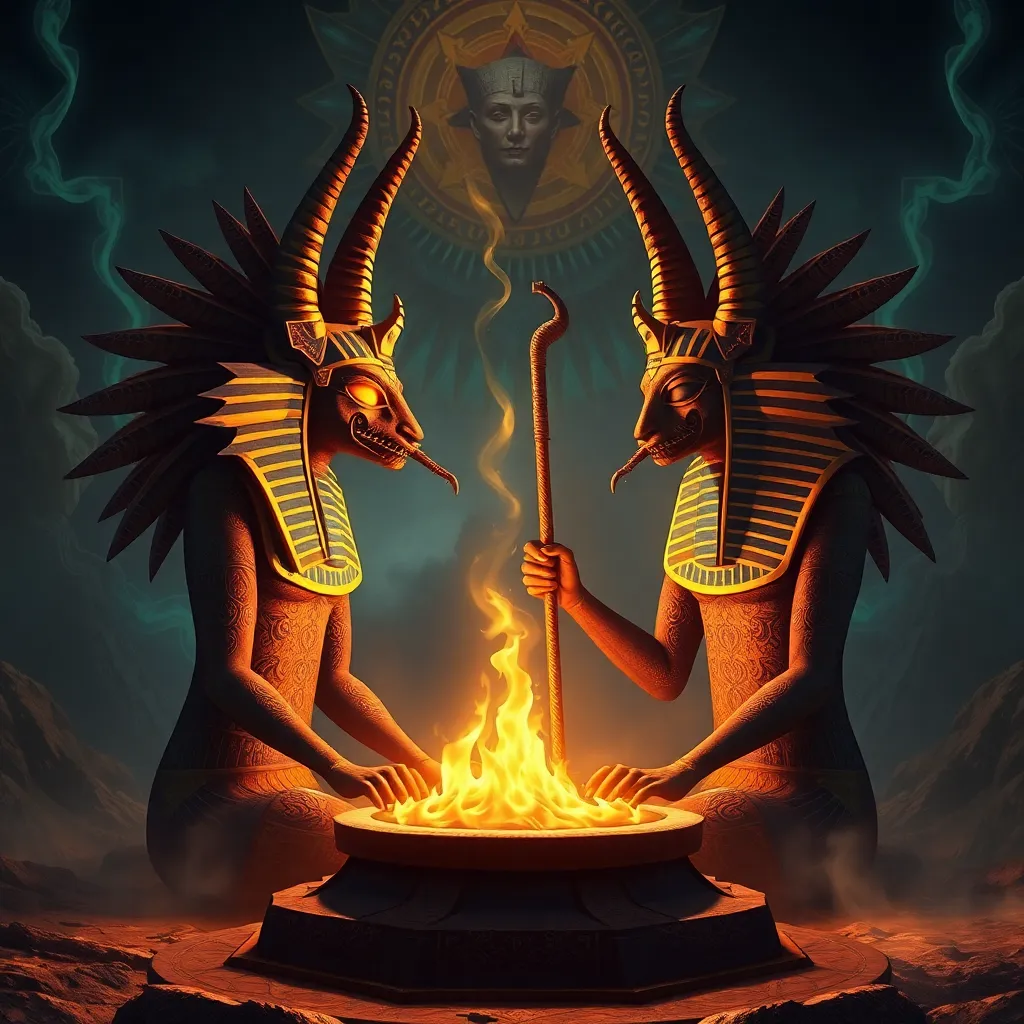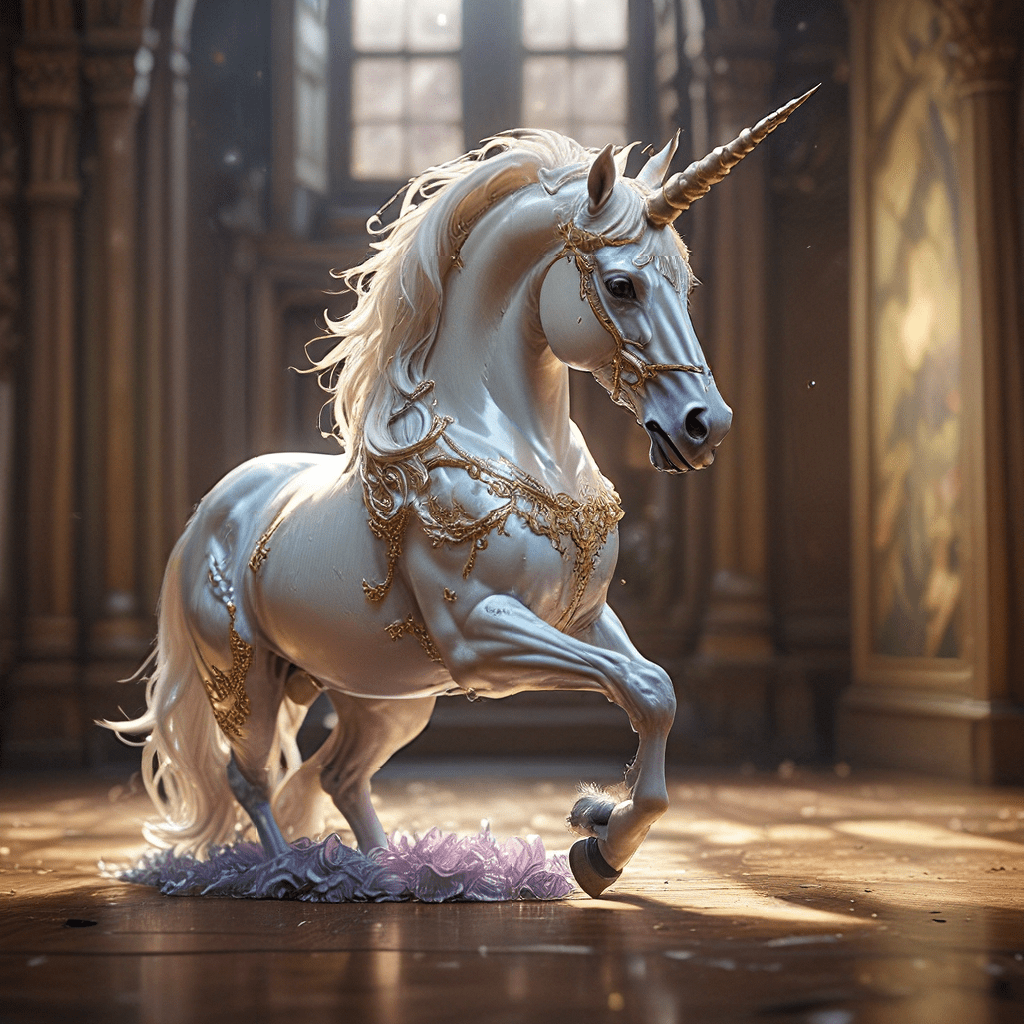The Anubis and Osiris Connection: A Tale of Death, Rebirth, and the Afterlife
I. Introduction
Ancient Egyptian mythology is rich with complex deities, each playing a vital role in the intricate beliefs surrounding death and the afterlife. Among these deities, Anubis and Osiris stand out as pivotal figures. Anubis, the god of mummification, is often associated with the afterlife, while Osiris, the god of the afterlife and resurrection, symbolizes rebirth and eternal life. This article explores the connections between Anubis and Osiris, delving into their roles in funerary practices, their intertwined myths, and their lasting impact on both ancient and contemporary views of death and rebirth.
II. The Roles of Anubis and Osiris in Egyptian Mythology
A. Anubis: The God of Mummification and the Afterlife
Anubis is often depicted as a jackal or a man with a jackal’s head, symbolizing his association with graves and cemeteries. His primary functions include:
- Symbolism and iconography: Anubis is frequently represented in a black color, which symbolizes fertility and rebirth, reflecting the richness of the Nile soil.
- Functions in funerary practices: He oversees the mummification process, ensuring that the deceased are preserved for the afterlife, and protects the dead as they transition into the next world.
B. Osiris: The God of the Afterlife and Resurrection
Osiris, depicted as a green-skinned man with a pharaoh’s beard, is associated with fertility and agriculture. His narrative is central to the themes of death and rebirth:
- Mythical narrative of Osiris’s death and resurrection: Osiris was betrayed and murdered by his brother Seth but was resurrected by his wife, Isis, establishing him as a symbol of eternal life.
- Significance in the cycle of life and death: Osiris’s resurrection represents the cyclical nature of life, signifying that death is not an end but a transformation.
III. The Myth of Osiris: A Story of Betrayal and Renewal
A. Overview of Osiris’s myth
The myth of Osiris is one of the most important tales in Egyptian mythology. It revolves around themes of betrayal, death, and ultimately, resurrection. Osiris was a benevolent ruler who brought civilization and agriculture to Egypt.
B. The role of Seth in Osiris’s death
Seth, the god of chaos and disorder, grew envious of Osiris’s power and popularity. In a cunning plot, he tricked Osiris into a coffin, which he then sealed and threw into the Nile, leading to Osiris’s death.
C. Isis’s quest to resurrect Osiris
Isis, devastated by her husband’s death, embarked on a perilous journey to find Osiris’s body. After locating it, she utilized her magical powers to resurrect him, allowing Osiris to become the ruler of the underworld, thus linking him forever to the afterlife.
IV. Anubis’s Role in the Journey to the Afterlife
A. The process of mummification and its significance
Mummification was a critical practice in ancient Egypt, believed to preserve the body for the afterlife. Anubis played a key role in this process, overseeing the embalming rituals and ensuring that the deceased were properly prepared for their journey.
B. Anubis’s guidance of souls through the Duat (underworld)
After death, souls would enter the Duat, the Egyptian underworld. Anubis acted as a guide, helping the deceased navigate the challenges they faced in the afterlife.
C. The weighing of the heart ceremony and its implications
One of the pivotal moments in the afterlife journey is the weighing of the heart ceremony. Anubis would weigh the heart of the deceased against the feather of Ma’at, the goddess of truth and justice. This ceremony determined whether the soul would be granted eternal life or face annihilation.
V. The Interconnectedness of Death and Rebirth
A. Symbolism of death and resurrection in Egyptian beliefs
In Egyptian culture, death was not viewed as a finality but rather a passage to a new beginning. The afterlife was a continuation of existence where one could achieve eternal life.
B. How Anubis and Osiris embody these themes
Anubis represents the process of death and the preservation required for the afterlife, while Osiris embodies the concept of resurrection and rebirth. Together, they form a complete cycle of death and renewal.
C. The cycle of life, death, and rebirth in Egyptian culture
This cycle is evident in agricultural practices, where the flooding of the Nile would rejuvenate the land, symbolically mirroring the death and rebirth of Osiris, who was associated with fertility and the harvest.
VI. Anubis and Osiris in Art and Literature
A. Depictions in ancient Egyptian art
Anubis and Osiris were commonly depicted in tomb paintings, sculptures, and amulets, emphasizing their roles in the afterlife. Artistic representations often convey their protective and guiding natures.
B. References in literature and texts, such as the Book of the Dead
Ancient texts like the Book of the Dead contain spells and prayers that invoke Anubis and Osiris, guiding the deceased through the afterlife. These texts play a crucial role in understanding the beliefs of ancient Egyptians regarding death.
C. Modern interpretations and cultural significance
Today, the imagery and stories of Anubis and Osiris continue to inspire artists and writers, reflecting our ongoing fascination with themes of death, afterlife, and rebirth.
VII. The Legacy of Anubis and Osiris in Contemporary Culture
A. Influence on modern interpretations of death and the afterlife
The myths of Anubis and Osiris have influenced contemporary views on death, shaping spiritual beliefs and practices regarding the afterlife in various cultures.
B. Anubis and Osiris in popular media (films, books, etc.)
These deities have appeared in numerous films, books, and video games, often depicted as guardians of the afterlife or symbols of resurrection, highlighting the enduring nature of their myths.
C. Continued relevance of their myths in spiritual practices
Modern spiritual movements often draw upon ancient Egyptian beliefs, incorporating elements of Anubis and Osiris into their practices, reinforcing the relevance of these figures in contemporary spirituality.
VIII. Conclusion
In summary, Anubis and Osiris are central figures in ancient Egyptian mythology, embodying the complex themes of death, rebirth, and the afterlife. Their interconnected tales highlight the Egyptians’ intricate beliefs surrounding mortality and the journey beyond death. The legacy of Anubis and Osiris continues to resonate today, reminding us of the enduring human fascination with life, death, and what lies beyond.



